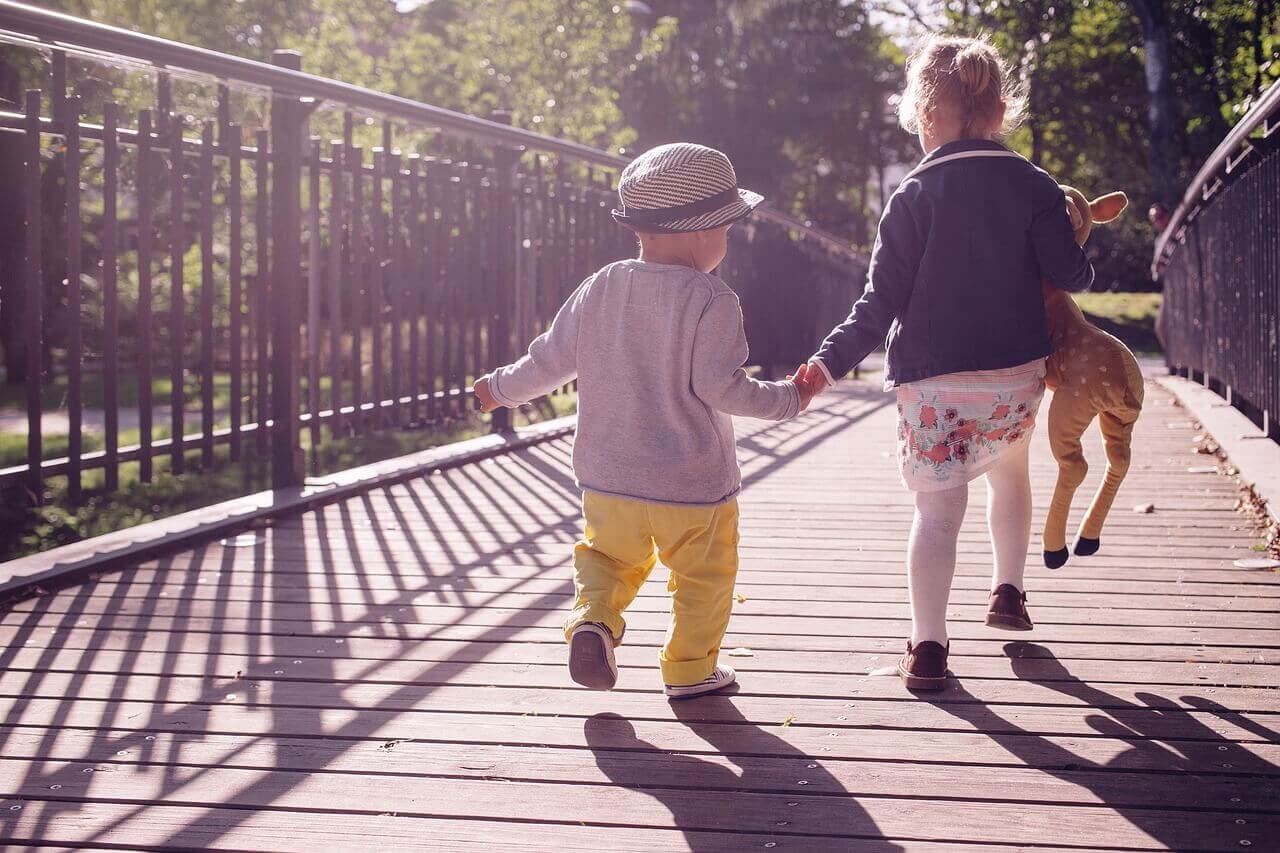10 Exercises to Help Your Child Learn to Walk

Around the age of 11 to 12 months, your baby will be able to learn to walk. However, it’s normal for a child to reach this milestone between the ages of 9 and 15 months. So you needn’t worry if your baby turns one and still hasn’t learned to walk. Nevertheless, you can start to encourage your child to walk with certain activities.
Walking will happen slowly. Your baby will show you signs when they are ready to start walking.
For example, they may not stop moving. They may look for suitable furniture, chairs, boxes or anything they can get their hands on to help them stand for longer periods. When they’re getting ready to learn, they’ll also love that the bigger ones help them stand up!
A new chapter of learning starts when a child first begins to walk. As a parent, you’ll feel hopelessly exhausted by the end of it! This is because you’ll have to follow your baby as they move around. However, you’ll also feel so excited to share these new adventures with your little one.
Encourage your baby to learn to walk

Walking isn’t always an easy process for babies. It’s a huge achievement in the development of your child’s motor skills. Sooner or later, they will become your next walking companion.
To help your child learn to walk, you must first help them build the strength of their leg muscles. Practice daily, but allow them to have fun. Playing is the best tool for helping them learn to walk. It prevents muscle discomfort when they do start to walk.
Here are some tips to do this.
You may find this interesting: How to detect vision problems in young childre
1. Help them made pedaling movements
Play by pedaling their legs. After bath time or when you need to change their diaper, take hold of their legs and move them as though they were pedaling a bicycle. Flex their legs and touch their stomach with them. Give them a good stretch!
2. Encourage them to crawl
Lay your child down on a blanket on the floor and grab their attention with a brightly colored toy. They’ll try to crawl, so rest your palms on the soles of their feet so they can use them to gain momentum. Slowly but surely they will start to crawl.
3. Have fun at bath time

While we may not like the state of the bathroom after, splashing is an amazing exercise for your baby. Make sure you still make it fun when an opportune moment to exercise their legs appears. It’s more than just exercise; it’s also a very fun game!
4. Help them stand up
Encourage them to stand up. Little by little their curiosity and urge to explore will force them to stand up. Help them stand up by using crib bars, or place toys or objects that will grab their attention so that they want to stand.
5. Use just one finger to help them walk
When your baby starts taking their first steps, offer one of your fingers so they balance better. Little by little they will use your support to take their steps and prevent accidents.
6. Encourage them to hold onto something
Another game to help the child to walk is to look for a small chair and have them stand next to it. They will use the chair as support so they can stand up.
7. Let them go barefoot to learn to walk
A really good and often overlooked exercise to help your child learn to walk is to have them barefoot around the house. By doing this, their balance and grip on the floor will improve, as well as their perception and relationship with their surroundings.
8. Stretch their legs
When their legs are strong enough, play with your baby by using your legs to stretch theirs. They will try to stand. They can also use your legs to help them get up.
9. Help them learn to walk with objects
Using objects like a walker, shopping cart or a toy stroller can help your child learn to walk. Because babies love to push objects, they will feel safe and confident to take some steps by grabbing this new toy.
10. Get closer
When your baby is ready to stand up, you can hold their hands and help them take their first steps. When you feel confident enough, you can step away and encourage them to take their first steps towards you.
Recommended for you: Five ways to practice spelling with your child
Final suggestions for helping your child learn to walk

They will fall. When they do fall, try not to be too worried. Your reaction will scare them more than any fall. They will also learn fear and dread and a fall can cause them to pull away from learning to walking.
Because of this, it’s important to provide a safe and secure environment where your child can learn to walk. There should be no dangerous objects or unprotected sharp corners. Also, the area must be free of risks such as power plugs or loose wires.
But what if your baby doesn’t walk? When is it time to talk to your doctor? If your child hasn’t attempted to walk after 18 months you need to contact your pediatrician. They’ll be able to give you the best advice and rule out any major problems.
All cited sources were thoroughly reviewed by our team to ensure their quality, reliability, currency, and validity. The bibliography of this article was considered reliable and of academic or scientific accuracy.
- Clearfield, M. W. (2011). Learning to walk changes infants’ social interactions. Infant Behavior and Development, 34(1), 15-25. https://doi.org/10.1016/j.infbeh.2010.04.008.
- Desarrollo de los niños que comienzan a caminar. MedlinePlus. https://medlineplus.gov/spanish/ency/article/002010.htm
- Martín Gutiérrez de Cabiede, M. B. (2011). Pasito a pasito. Aprendiendo a caminar. https://repositorio.comillas.edu/xmlui/bitstream/handle/11531/26472/Hacer%20Familia%20206%20-%20201104%20Estimulacion%20Temprana%20p38-40.pdf?sequence=1&isAllowed=y
This text is provided for informational purposes only and does not replace consultation with a professional. If in doubt, consult your specialist.








